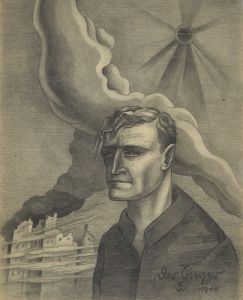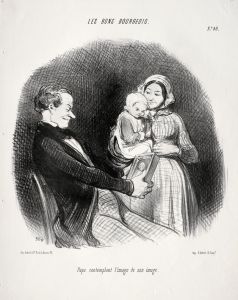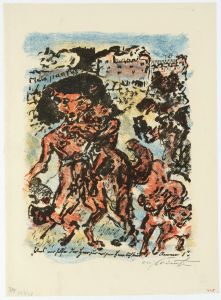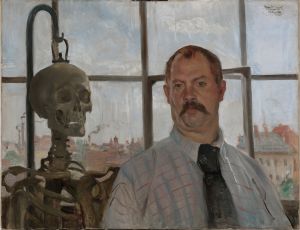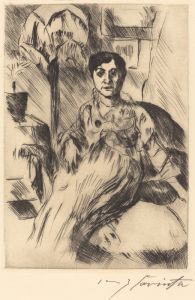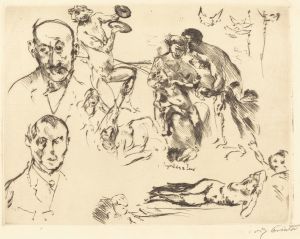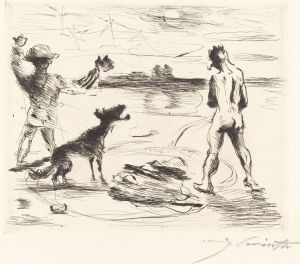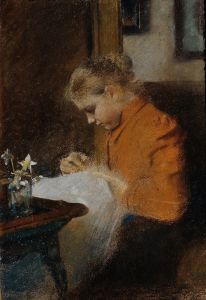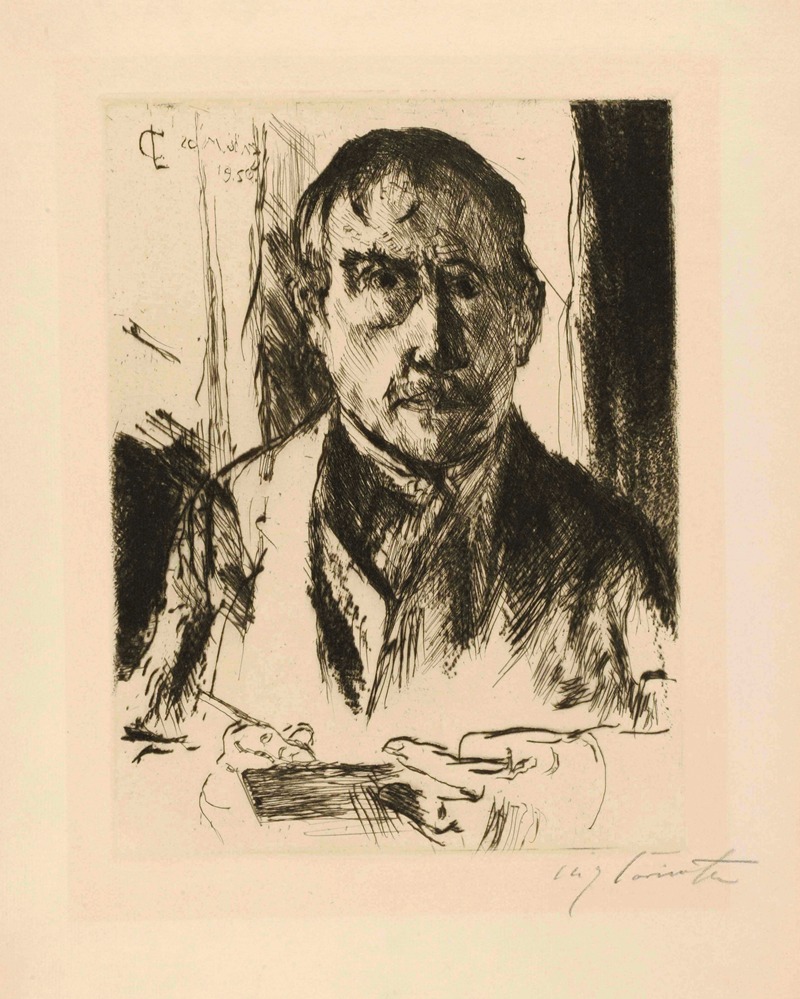
Self-Portrait
A hand-painted replica of Lovis Corinth’s masterpiece Self-Portrait, meticulously crafted by professional artists to capture the true essence of the original. Each piece is created with museum-quality canvas and rare mineral pigments, carefully painted by experienced artists with delicate brushstrokes and rich, layered colors to perfectly recreate the texture of the original artwork. Unlike machine-printed reproductions, this hand-painted version brings the painting to life, infused with the artist’s emotions and skill in every stroke. Whether for personal collection or home decoration, it instantly elevates the artistic atmosphere of any space.
Lovis Corinth, a prominent German painter and printmaker, is known for his significant contributions to the transition from Impressionism to Expressionism in the late 19th and early 20th centuries. Among his extensive body of work, Corinth's self-portraits stand out for their introspective depth and technical mastery. One such notable work is "Self-Portrait by Lovis Corinth," which exemplifies his unique style and personal exploration through art.
Lovis Corinth was born on July 21, 1858, in Tapiau, East Prussia, now Gvardeysk, Russia. He studied at the Academy of Fine Arts in Munich and later in Paris at the Académie Julian. Corinth's early work was heavily influenced by the Impressionist movement, characterized by loose brushwork and a focus on light and color. However, as his career progressed, he began to incorporate more expressionistic elements, emphasizing emotional content and dynamic compositions.
Corinth's self-portraits are particularly significant as they provide insight into his evolving artistic style and personal life. Throughout his career, he painted numerous self-portraits, each reflecting different aspects of his personality and artistic development. These works often reveal his introspection and the psychological complexity that he brought to his art.
"Self-Portrait by Lovis Corinth" is one of the many self-portraits he created, capturing his likeness with a blend of realism and expressive brushwork. In this painting, Corinth's use of color and texture is notable, as he employs a vibrant palette and energetic strokes to convey both his physical appearance and inner state. The self-portrait is not merely a depiction of his external features but also an exploration of his identity and emotions.
Corinth's self-portraits often include symbolic elements that hint at his personal experiences and struggles. For instance, after suffering a stroke in 1911, which left him partially paralyzed, his self-portraits began to reflect a more introspective and sometimes somber tone. This period marked a significant shift in his work, as he grappled with themes of mortality and resilience.
The self-portrait genre allowed Corinth to experiment with different techniques and styles, showcasing his versatility as an artist. His ability to convey complex emotions through his self-portraits has been widely recognized and appreciated in the art world. These works serve as a testament to his skill in capturing the human condition, both physically and psychologically.
Lovis Corinth's self-portraits, including "Self-Portrait by Lovis Corinth," are housed in various museums and collections around the world, reflecting his enduring legacy and influence on modern art. His contributions to the development of Expressionism and his exploration of self-identity through art continue to be studied and admired by art historians and enthusiasts alike.
In summary, "Self-Portrait by Lovis Corinth" is a significant work that exemplifies the artist's mastery of technique and his introspective approach to art. Through his self-portraits, Corinth not only documented his own likeness but also delved into the complexities of human emotion and identity, leaving a lasting impact on the art world.





